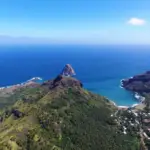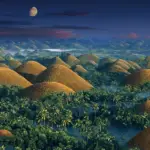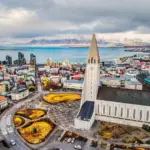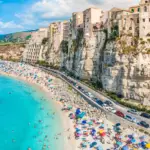
Exploring the Enigmatic Waters: The Fascinating Location of Lake Titicaca Between Peru and Bolivia
Introduction
But where is the lake? Titicaca? Lake Titicaca is a stunning body of water located in South America, situated in the Andes region and shared by the countries of Peru and Bolivia. It is considered the highest navigable lake in the world and has a rich cultural history, being associated with several ancient civilizations, such as the Incas. Its specific geographic location is in the southwestern portion of the Andes mountain range, forming part of the border between these two South American countries.
Lake Titicaca, with its mysterious and fascinating aura, is a destination that captivates travelers from all over the world. Located in the Andes region between Peru and Bolivia, this majestic body of water has a rich history and stunning natural beauty that captivates the imagination of all who visit.
The Mystery of Lake Titicaca
Lake Titicaca is known for its air of mystery, shrouded in legends and myths passed down through the generations. This lake is believed to be the cradle of the Inca civilization and still holds hidden secrets beneath its crystal-clear waters. Its remote location in the Andes Mountains contributes to this enigmatic atmosphere, making it a destination full of intriguing possibilities.
Even today, the indigenous communities that inhabit the lake's shores preserve ancestral traditions and sacred rituals related to it. These customs add an additional element of mystery to the lake, sparking curiosity about its spiritual and cultural importance.
Geographical Glimpse
Nestled in a stunning mountainous region between Peru and Bolivia, Lake Titicaca occupies a unique position in the geographic landscape of South America. With a total area of approximately 8,372 km² (3,232 mi²), the lake straddles the Andes mountain range at an altitude of 3,812 meters (12,507 ft) above sea level.
With its crystal-clear waters, Lake Titicaca is considered the highest navigable lake in the world. This unique geographical feature attracts the attention of scientists and scholars, who marvel at its formation and uniqueness.
Furthermore, the lake's geographic location also has significant cultural implications. Its proximity to the historic cities of Puno Peru and Copacabana in Bolivia makes it a focal point for exploring the region's rich Andean cultural heritage.
Lake Titicaca: Overview
Description of the lake's dimensions and depth
Lake Titicaca is a natural wonder located in the Andes region, between Peru and Bolivia. Covering an area of approximately 8,372 km², its crystal-clear waters stretch across a vast landscape that captivates visitors.
Furthermore, its average depth is about 107 meters, while its deepest point reaches an incredible 281 meters. These impressive dimensions make Lake Titicaca one of the largest lakes in Latin America and the world.
Highlighting its position as the largest navigable lake in the world
One aspect that sets Lake Titicaca apart is its status as the largest navigable lake in the world. With such a vast area, it offers ample opportunities for exploration via traditional vessels, such as rowboats or canoes. Sailing across the lake provides travelers with a unique experience, allowing them to appreciate the incredible surrounding mountain landscapes while gliding gently over its calm waters.
Mention the cultural and historical importance of the lake for ancient civilizations

Beyond its stunning natural beauty, Lake Titicaca holds inestimable cultural and historical value. For the ancient civilizations that inhabited the Andes region, the lake was considered sacred and associated with the creation of the world. According to local legends and myths, it was at Lake Titicaca that the gods emerged from the depths to establish the first civilizations.
The lake was also an important center for cultures such as the Incas and Tiwanaku, who built temples and developed religious practices around it. Even today, many ceremonial traditions are performed on the lake's islands as a way to preserve this rich cultural heritage.
These aspects of Lake Titicaca's overall appearance—its impressive size, status as the world's largest navigable lake, and its cultural and historical significance—make it a must-see destination for anyone seeking a unique and enriching experience in the Andes region. Whether exploring its floating islands or gazing at the grandeur of its turquoise waters, Lake Titicaca will certainly leave an indelible mark on its visitors' memories.
What to do at Lake Titicaca
Lake Titicaca is a popular tourist destination in South America, with plenty of activities to do in the area. Some options include:
- Visit Puno: Puno is the perfect base for exploring Lake Titicaca on the Peruvian side. The city itself is quite charming and has many restaurants and shops to explore.
- Floating Islands of Uros: The Uros Floating Islands are a group of artificial islands made of totora, an aquatic plant, and inhabited by an indigenous community. You can visit the islands and learn about the local culture.
- Taquile Island: Taquile Island is an island on the Peruvian side of Lake Titicaca, known for its culture and crafts. You can hike the island and visit craft workshops.
- Amantani Island: Amantani Island is another island on the Peruvian side of Lake Titicaca, known for its culture and traditions. You can spend the night on the island and sample the local cuisine.
- Islands of the Sun and the Moon: The Sun and Moon Islands are located on the Bolivian side of Lake Titicaca and are known for their historical and cultural significance. You can visit Inca ruins on Sun Island and learn about Andean mythology on Moon Island.
- Sillustani: Sillustani is an archaeological site located near Lake Titicaca, known for its pre-Inca burial towers. Guided tours are available.
- Portal of the Sun: The Portal of the Sun is an ancient structure located in Tiwanaku, Bolivia, near Lake Titicaca. It is known as an example of the high degree of perfection achieved by pre-Columbian culture in the Americas. The portal was built thousands of years ago by an ancient culture that inhabited the region.
- Some features of the Sun Portal include:
- Weight and dimensions: The portal was created from a single block of andesite, weighing approximately 10 tons. It is approximately 3 meters high and 4 meters wide.
- Location: The Portal of the Sun is located near Lake Titicaca, one of the most wonderful lakes on Earth.
- Historical significance: The portal has significant symbolic and historical significance. According to legend, Viracocha, an Andean deity, rose from Lake Titicaca during the time of darkness to produce light and create the moon, sun, and stars.

These are just a few of the many activities you can do in the Lake Titicaca region. It's important to remember that the region is cold, so it's important to bring appropriate clothing for the weather.
the location between Peru and Bolivia in the Andes region
Lake Titicaca's majestic location is one of the most impressive features of this natural treasure. Nestled in the heart of the Andes, between the borders of Peru and Bolivia, this freshwater lake sits over 3,800 meters above sea level. Its unique geographical position lends an air of mystery and grandeur to its surroundings. The Andes region, renowned for its stunning beauty and imposing landscapes, is home to Lake Titicaca.
The mountain ranges surrounding the lake stretch for miles on end, creating a spectacular backdrop for visitors to this region. The lush nature of the Andes is living proof of the effervescent force that has shaped this area over millions of years.
Furthermore, the Andes are home to diverse indigenous communities that have preserved their cultural traditions for centuries. The unique blend of stunning landscape and rich cultural heritage makes Lake Titicaca's location even more intriguing for explorers and travelers in search of adventure.
Explanation of the territorial division between the two countries around the lake
Lake Titicaca is shared by Peru and Bolivia, each country claiming a portion of this natural wonder. The territorial division between the two countries is defined by international agreements and bilateral treaties, granting both countries access to this shared treasure.
The Peruvian part of the lake covers about 60% of its total area, while Bolivia holds the remaining 40%. On the Peruvian side, the city of Puno It is the main urban center near the lake and offers a base for exploring its shores and islands.
On the Bolivian side, the city of Copacabana stands out as a major tourist destination and a starting point for nearby excursions. Despite the territorial division, Lake Titicaca remains a symbol of connection between the two nations.
Both countries share a rich cultural heritage associated with the lake and recognize its economic and tourist importance. Collaboration between Peru and Bolivia in the sustainable management of this valuable natural resource helps preserve its beauty for future generations.
The Peruvian Side of Lake Titicaca
Exploring the Peruvian towns and villages surrounding the lake
The Peruvian region around Lake Titicaca is endowed with a rich history and culture, highlighted by the picturesque towns and villages that surround it. One of the main destinations is the city of Puno, located on the shores of the lake. Puno enchants visitors with its Spanish colonial architecture, narrow streets, and vibrant cultural atmosphere.
It's also a starting point for several excursions to the lake's islands. Another notable village is Juliaca, located about 45 kilometers north of Puno.
Although considered an important commercial center in the region, Juliaca preserves its traditional Peruvian identity in its festivities and popular celebrations. These towns and villages offer travelers an authentic glimpse into local life, with colorful markets brimming with traditional Andean products and unique crafts.

Discovering the floating islands of Uros
Among the natural wonders of Lake Titicaca are the famous floating islands of Uros. These unique islands are hand-built by locals using totora, an aquatic plant abundant in the region. The Uros have lived in isolated communities on these artificial islands for centuries, keeping their ancestral traditions alive.
When visiting the Uros Islands, visitors are transported to an enchanting and surreal world. Visitors can explore the small islands, walk on the floating surface, and even interact with locals.
They share their culture, demonstrate their construction techniques, and offer traditional crafts to visitors. This unique experience provides a deeper understanding of life on the lake and the cultural legacy that endures through the centuries.

Conclusion
The Peruvian side of Lake Titicaca is a hidden gem that captivates travelers with its rich cultural heritage and stunning natural beauty. While exploring cities like Puno and Juliaca, we are transported to the heart of Andean culture, where historical wonders blend harmoniously with contemporary life. Furthermore, the visit to fascinating floating islands of Uros takes us on a journey unique in time, where ancient traditions are preserved and generously shared with curious visitors.
Lake Titicaca is truly a magical destination that offers an experience unforgettable for those who dare to explore its secrets. Therefore, when plan your next trip If you're visiting the Lake Titicaca region, be sure to dedicate enough time to discovering the Peruvian side of this magnificent lake – you'll certainly be rewarded with lasting memories and a deeper understanding of the cultural richness of this unique area of the world.
Lucas Wanderlust has a tireless spirit of adventure, always seeking new travel experiences. Fascinated by the world and the possibility of exploring unknown destinations, he fell in love with the sense of freedom and self-discovery that traveling alone provides. With a backpack on his back and a heart open to the unknown, Lucas embarks on exciting journeys, where each destination becomes a unique chapter in his life story. He gives himself body and soul to the magic of solo travel, inspiring others to follow in his footsteps and discover themselves through adventure.







